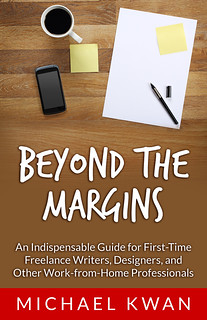
This is a little pet peeve of mine among people who can’t resist every sale that they encounter. They’ll see a sign that says they get a “free gift” with purchase and they jump all over this “fantastic” promotion. After all, it is a “free” gift, right?
No, not at all.
It’s not free. You’re paying for it.
How do you go about getting that free gift with purchase? It’s the “with purchase” part of that statement that should catch your eye and not the “free gift” part. In effect, you are getting a slight discount on your primary purchase and then you are “buying” the free gift. Similar kinds of sales tactics are abound just about everywhere.
Need a new cell phone? Get a shiny new BlackBerry for free… when you sign a three-year contract. What have you done there? You got a free phone, but you signed away the next three years of your cellular existence. Just as a business lunch that you write off isn’t free, neither is that cell phone.
What about buy one get one free? The second item is free, right? No, not at all. In effect, you are getting 50% off the regular price, but you are forced to buy (at least) two products at a time. It’s not free; it may be discounted, but it’s not free. And even then, it’s not unfathomable for these stores to mark up their prices before offering the BOGO sale.
Even when it comes to free birthday food, it’s not always free either. With some of those promotions, you have to come with a friend who purchases a meal at full price. With others, both of you have to purchase a drink. Whatever the case, there’s usually a “catch” of some kind, official or implied.
Before you go running toward the “free” sign, consider what is the true price of your purchase. Resist the urge to buy something just because it’s cheap. Ask yourself whether you actually want and/or need that product and if it is really a suitable price for it. With that in mind, go enjoy your shopping this weekend. 🙂





What if you were going to buy it anyway? Is it still free, then?
I thought this post would catch your eye. I’d argue that the item still isn’t free if you were going to buy it anyway; instead, it means you’re getting a discount on the main and “bonus” item… but that’s mostly a matter of semantics.
No Michael I believe you are wrong here. If I go to the grocery store and it says buy 1 get 1 free for a 2.50 loaf of bread I have bought 1 at 2.50 and gotten the other for $0. Now I could argue that I got 2 for 1.25, but that is not the way it is. If I buy 1, it’s 2.50 not 1.25 so that doesn’t wash. Now if you see 2 for 5.00 save .99 cents, you can still buy 1 for 2.50.
What you are talking about is just writers semantics.
I’m with Ray on this one.
I always find it annoying that people still think “free” and “cheap” cell phones are really “free” and “cheap”. 3 year contract! That’s a long ass time!
It’s even more blatant in Hong Kong, the way the contracts are designed. They are usually shorter (18-24 months) but they make you pay for the phone upfront, then they pay you back over the course of the contract. Sure that makes it “free” but what you are really doing is giving them an interest free loan for the phone.
The contracts are even worse for the iphone of course, because those are the stupidest of stupid customers. They even force you to subscribe to at least one “value added service” for the duration of the contract. Want a fancy ringtone for people who call you? Too bad! You’re getting one anyway!
Koodo has the “pay you back” system too. They call it the “Tab.”
It’s just a psychological technique that marketers use to get us to buy. Studies have been done to determine how to present a product to consumers that will turn on their buying response.
For example, when buying a new car, some people are motivated to buy the car based on the looks of the car. Others are triggered into buying by the sound of the engine or the smell of the new interior.
The smart car salesman will observe the customer and determine what type of personality they have and then will offer their sales pitch to the customer using the customers primary representational system. He will connect with the customer based on what type of words motivate him to buy.
To be a smart consumer, we must learn to make purchases based on our own values and our own decisions. We need to comparison shop and only make decisions based on what meets our needs most effectively.